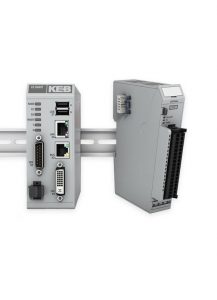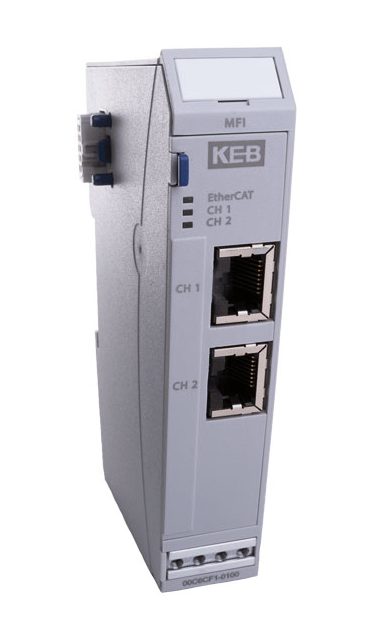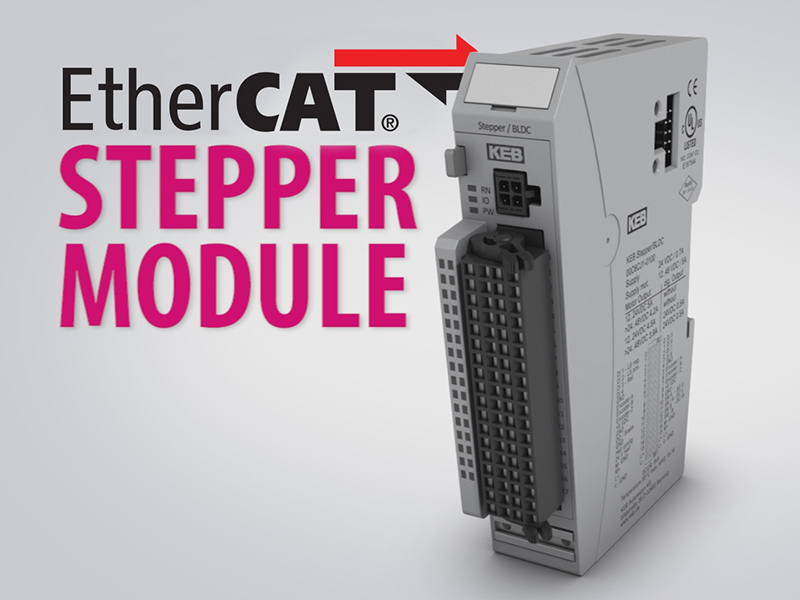[TRANSCRIPT]
The EtherCAT Relay IO Module is the newest addition to the KEB Automation catalog of products. The Relay IO module combines a pilot relay with an IO module, providing the functions of two blocks on a DIN rail in the space of one. At only 25mm wide, the Relay IO module is a great space-saver in any installation cabinet.
The module is used to interface with both 120 volt and 230 volt AC field wiring. Typically a power contactor is signaled by a pilot or control relay. Traditionally the pilot relay is connected to an I/O module which then receives signals from a push-button, a sensor, or via the PLC. The signal going through the pilot relay will trigger the contactor to turn the load on and off. KEB’s relay module combines the function of an I/O module and DIN-mounted pilot relay.
When multiple loads are required you save significant space on the DIN rail by removing pilot relays and consolidating up to eight loads into a single module. Similar to other KEB I/O blocks the relay module measures only 25mm wide and has pluggable connectors. It is DIN rail-mounted and mechanically locks into other modules for a secure connection.
The I/O signals communicate from the C6 Smart to the relay module through a high-speed EtherCAT backbone. KEB’s EtherCAT relay module features eight Form A normally open contacts. The contacts are rated two amps each for inductive loads and five amps each for resistive loads.
The relay module is UL-listed and available for immediate sale.
To learn more about the EtherCAT Relay IO Module or any other EtherCAT drive products visit the Contact Us page on the website. Or, fill out the contact form or simply give us a call and we’d be happy to answer your questions. Thanks.
Let's Work Together
Connect with us today to learn more about our industrial automation solutions—and how to commission them for your application.




